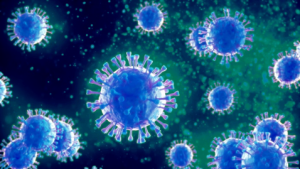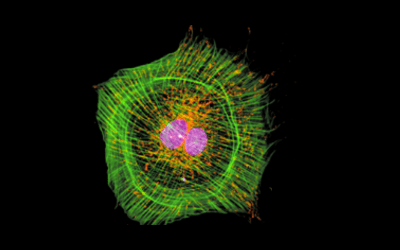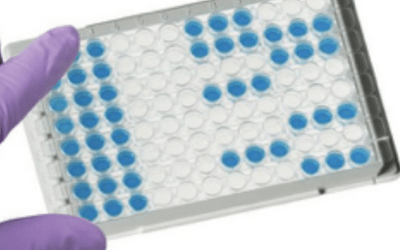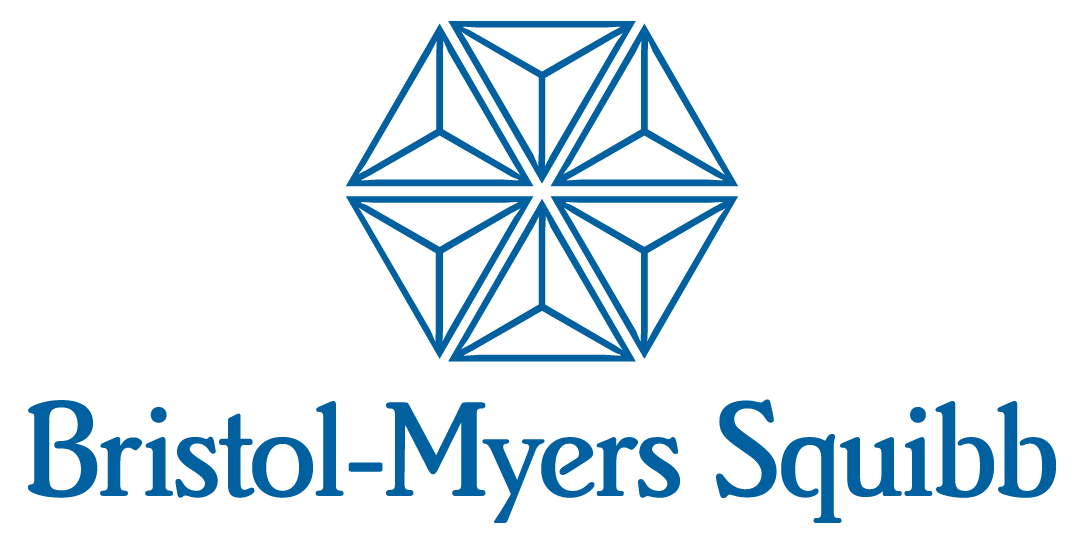Articles
FluoroFinder News & Updates
From flow cytometry research and experimental design trends to FluoroFinder tool updates and industry applications, we explore it all in our blog.
Antigen Density: Why Brighter Is Not Always Better
Antigen Density Antigen density refers to the number of target molecules in a specific cell subset. Antigens expressed at high levels are densely populated on the cell, making them more readily available for antibody detection. Understanding antigen density is...
Newsletter: Flow Cytometry Fights COVID-19
How cytometry is helping researchers fight a pandemic Flow cytometry is playing a central role in shaping our understanding of COVID-19 disease and the SARS-CoV-2 virus. Here we highlight how research teams are using flow cytometry to detect SARS-CoV-2, identify...
Newsletter: State of Spectral Flow Cytometry
State of Spectral Flow Cytometry Spectral analyzers are the next generation of multicolor flow cytometers offering unparalleled sensitivity, increased detection range, do-it-all flexibility, and ease of use. Unlike conventional flow cytometers which use dichroic...
Newsletter: Choosing a Flow Cytometry Analysis Software
Analysis Software FluoroFinder’s panel builder tool is the obvious choice to simplify your flow cytometry experiment design, but you will also need to choose software for efficient data analysis. Your lab or core facility may already have one or more analysis...
Newsletter: Flow Cytometry Applications for Blood Immunophenotyping
Flow Cytometry Applications for Blood Immunophenotyping Immunophenotyping refers to the process of detecting expressed protein markers to identify and quantify specific subsets of cells within a heterogeneous population. Flow cytometry is the most common method of...
Newsletter: Tandem Dyes – Life is Brighter with a Buddy
Tandem Dyes The commercial availability of antibody-linked fluorescent dyes has expanded rapidly over the past decade. Where researchers were once limited to a handful of common dyes (FITC, PE, APC, PerCP, etc.), they can now choose from an extensive list of...
Newsletters: Flow Virometry
Flow Virometry Multicolor flow cytometry can be used to detect and characterize viral antigens. This technique, called flow virometry, allows researchers to define viral particle profiles and better understand the relationship between infectivity and transmissibility...
Newsletter: The Potential and Limitations of Image Flow Cytometry
Image Flow Cytometry Image flow cytometry (IFC) is a technique that combines fluorescent immunostaining and microfluidics with powerful digital imaging software. Like flow cytometers, image cytometers analyze heterogeneous cell populations across multiple parameters...
Newsletter: Fighting the Replication Crisis with Open Research
The replication crisis, or data irreproducibility crisis, is now a well-established problem across all scientific disciplines. This inability for researchers to replicate published experimental results exposes data integrity issues and risks potentially faulty...
Newsletter: Cytometer Instrument Types
Flow Cytometer/Cell Sorter Instrument Types Flow cytometers and cell sorters are two powerful tools for the accurate and efficient characterization of cells. Both instrument types measure forward scatter (FSC), side scatter (SSC) and multiple fluorescent parameters...
Newsletter: Understanding Fluorochromes for Flow Cytometry
Advances in flow cytometry instrumentation, technology and chemistries have enabled researchers to expand their experimental parameters rapidly. Experiments that were once limited to the detection of three to four parameters have increased to detect up to 40 compounds...
Newsletter: Fluorescent Protein Expression
Fluorescent proteins are an important part of any molecular biologist’s toolkit. Recombinant DNA techniques allow researchers to incorporate a fluorescent protein into an engineered plasmid and track its expression over time with flow cytometry or, more commonly,...
Newsletter: FLISA vs Fluorescent ELISA
The enzyme-linked immunosorbent assay (ELISA) offers a simple and effective method for rapid biomarker detection. The main benefits of ELISA include good specificity, low cost, and straightforward readout. However, the limited sensitivity of standard colorimetric...
Newsletter: Background Fluorescence
Background fluorescence includes any signal detected beyond what is generated by the fluorochromes being measured. The three major sources of background fluorescence include autofluorescence, spectral overlap, and undesirable antibody binding. Because false signals...
Newsletter: Advances in Flow Cytometry
The field of flow cytometry continues to progress toward the goal of collecting and analyzing more data. Here we explore two recent advancements: spectral analyzer platforms to collect more data, and machine learning algorithms to analyze larger datasets. Machine...
Newsletter: Getting more from less with multiplex IHC
Pathologists and life science researchers are increasingly performing multiplexed assays on formalin-fixed, paraffin-embedded samples. This allows for the collection of more data from a single tissue specimen, far beyond the typical single-color immunohistochemistry...
Newsletter: The Do’s and Don’ts of Compensation
Compensation is the process of correcting for spillover when one fluorophore is detected in multiple channels. It is required for most experiments of four or more colors to identify the correct signal that should be measured in each channel. This quick list can help...
Newsletter: Staining Index
When designing a flow cytometry experiment, it is important to consider the relative brightness of each fluorescent label on your specific instrument. Generally, it is best to assign brighter fluorochromes to weakly expressed markers, and dimmer labels to strongly...
Newsletter: Matching Secondary Antibodies for Indirect Flow Cytometry
Flow cytometry can be performed directly using a fluorescently labeled primary antibody, or indirectly using an unconjugated primary antibody with a labeled secondary. Most researchers prefer direct detection due to its simplicity and ease of use. However, certain...
Newsletter: Multicolor Microscopy
The inability to resolve signals with overlapping color spectra has traditionally limited fluorescence microscopy to a “color-barrier” of 5 colors. However innovative new developments in microscopy techniques and analysis software are allowing researchers to resolve...
Newsletter: A guide to Flow Cytometry Cell Cycle Analysis
Flow cytometry cell cycle analysis typically involves using a DNA binding dye to determine each cell’s total DNA content. Sorting cells by cell cycle phase is then possible, as the total DNA content fluctuates as cells pass through G0/G1, S, and G2/M phases. Cells in...
Improve your Gating Technique
The first step to any successful flow cytometry data analysis is proper gating. For a complete overview of gating terminology, types and strategies, check out our previous Gating Newsletter. Here we outline 6 questions that cytometry researchers should ask themselves...
Newsletter: Apoptosis
Flow cytometry remains the most powerful tool for studying apoptosis in cell populations. However, many researchers may not be aware of the variety of options available for apoptosis markers. Here we explore the use of flow cytometry in apoptosis research and examine...
Newsletter: Getting the most out of your cytometer
Cytometer technology is continually improving, with more lasers, detectors, and channels to allow the measurement of more parameters. But researchers are too often reluctant to expand the scope of their experiments for fear of increasing design complexity. This month...
Newsletter: Antigen Density Explained
This month we explain why antigen density is important to flow cytometry studies, describe how it is measured, and list some useful references for known antigen expression densities... 1. Why Antigen Density Matters 2. Methods for Determining Antigen Density 3....
Newsletter: 7 Steps of a Successful Flow Cytometry Experiment
Getting started in flow cytometry may seem overwhelming, so we’ve broken the flow cytometry experiment down into seven basic steps. 1. Select your Cytometer 2. Design your panel 3. Optimizing your staining protocol 4....
Newsletter: The History of Flow Cytometry
The field of flow cytometry research has evolved significantly over the past 70 years. Here we take a look back at some of the most important achievements on the path to bigger, faster and better flow cytometry experiments. Microscopes (Early 1700s) Antonie van...
Newsletter: Tandem Dyes
The commercial availability of antibody-linked fluorescent dyes has expanded rapidly over the past decade. Where researchers were once limited to a handful of common dyes (FITC, PE, APC, PerCP, etc.), they can now choose from an extensive list of fluorescent dye lines...
Newsletter: Compensation
Proper compensation is critical for accurate interpretation of your flow cytometry data. Therefore, we have compiled this “comprehensive” list of compensation tips to help improve your analysis. Sections: What is Compensation & Why Do I Need it? Best Practices for...
Newsletter: The Fight Against Irreproducibility
The “reproducibility crisis”, or the inability for researchers to replicate results or reproduce findings remains a growing concern for a wide range of scientific disciplines. This month, the National Association of Scholars published an excellent report examining the...
Newsletter: Tips for Getting Published
Posted on: Apr 3, 2018 We know you put a lot of time and effort into your flow cytometry experiments. Follow these 7 tips to ensure that your high-quality flow data is more likely to be published! Select the right cytometer Prepare your samples correctly Design a...
Newsletter: OMIPs Simplify Panel Design
What is a dump channel? Simply put, a dump (also called an exclusion) channel is used to group and exclude everything that is not of interest for your study. This typically involves using one or more antibodies to stain antigens that are known not to be expressed by...
Newsletter: Dump Channels
What is a dump channel? Simply put, a dump (also called an exclusion) channel is used to group and exclude everything that is not of interest for your study. This typically involves using one or more antibodies to stain antigens that are known not to be expressed by...
Newsletter: Viability Dye Selection Guide
Cell viability dyes are critical controls for proper flow cytometry analysis. Dead cells can skew data by causing cell aggregation, contributing to cellular autofluorescence or nonspecifically binding detection antibodies. This is especially problematic when measuring...
Newsletter: Art of Gating Flow Cytometry Data
Flow cytometry gating can often seem like a daunting task. While there is no single solution, experienced cytometrists can recommend several tips beyond “praying for good data”. Here we define gating, explore gating methodologies, and provide some useful tips for...
Newsletter: Colors
This month we explore the ever-expanding selection of commercially available fluorescent antibodies and how researchers are getting better data by designing more colorful panels. Sections: Research Trend Toward More Colors Suppliers Expanding Fluorescent Catalogs...
Newsletter: Best Practices
FluoroFinder has integrated cytometer configurations for over 500 cores! (You can check for yours here). With so many researchers now using FluoroFinder to design their flow cytometry experiments, we wanted to share some of the excellent feedback we have received....
Newsletter: Get More from Your Core
If you are working with a shared flow core facility, then you probably know how important it is to get the most out of your limited cytometer time. Aside from costing your lab time and grant money, shared cytometers are a valuable resource so booking additional time...
Newsletter: Reproducibility Crisis
You may have read about a growing “reproducibility crisis”, where scientists are increasingly unable to replicate the results of their colleagues’ scientific experiments. To combat this trend, research teams are emphasizing collaboration throughout the experiment...
Cytometers
Analyzers & Cell Sorters Selecting the optimal cytometer for your experiment can be as important as the panel you design. We have compiled this useful list of popular cytometers for your reference. However, you should also consult your flow core manager for their...
















































